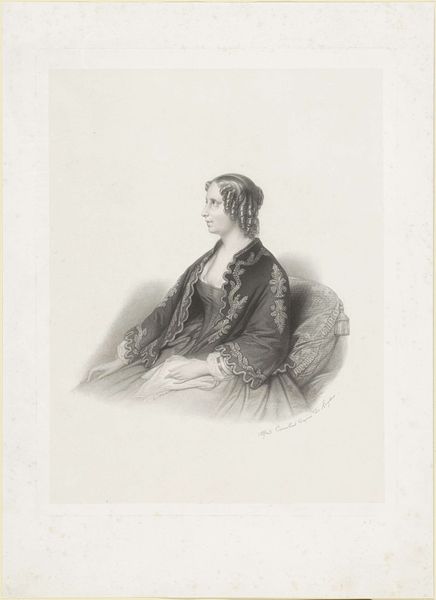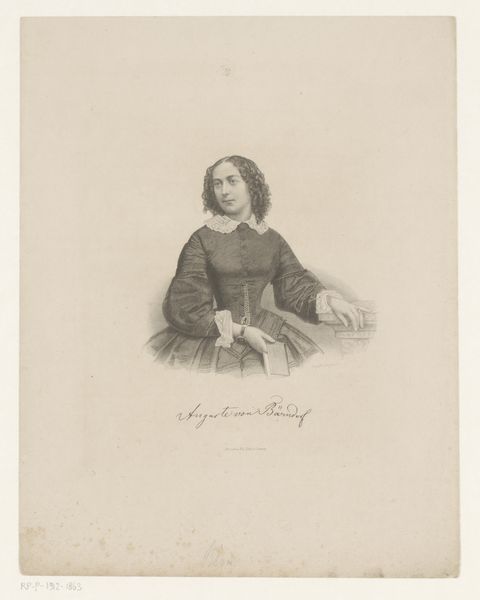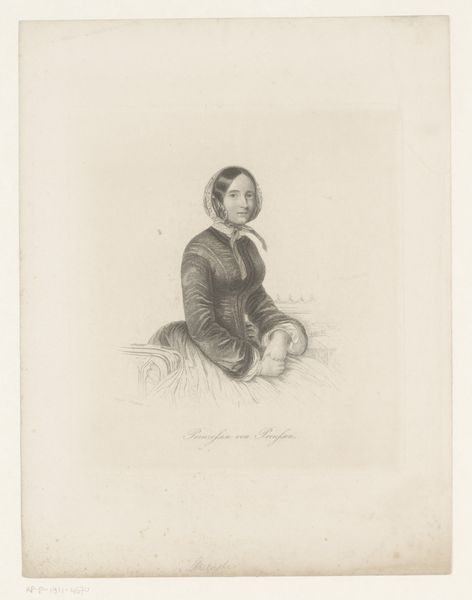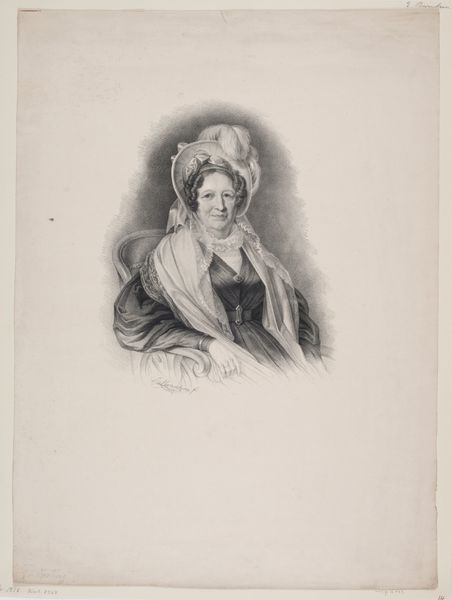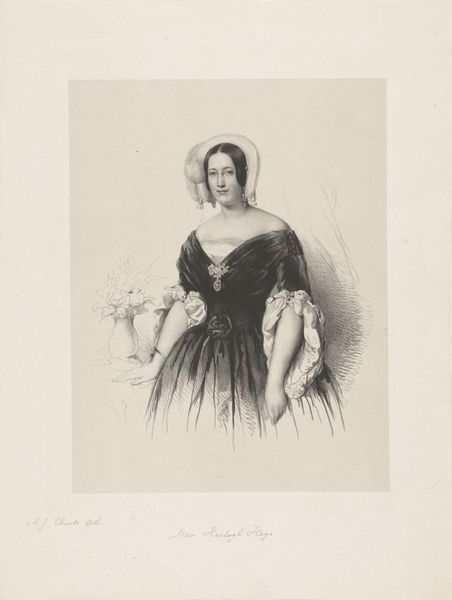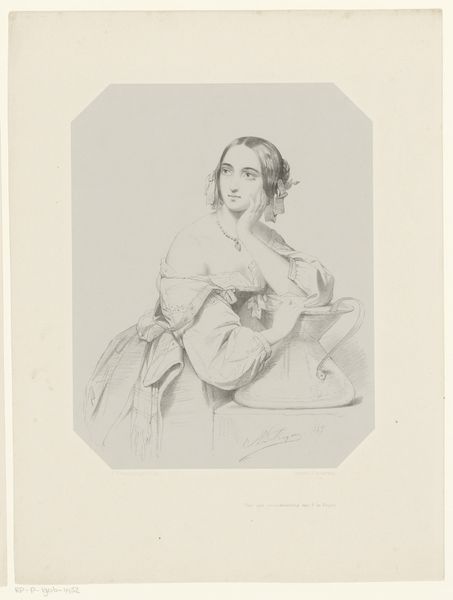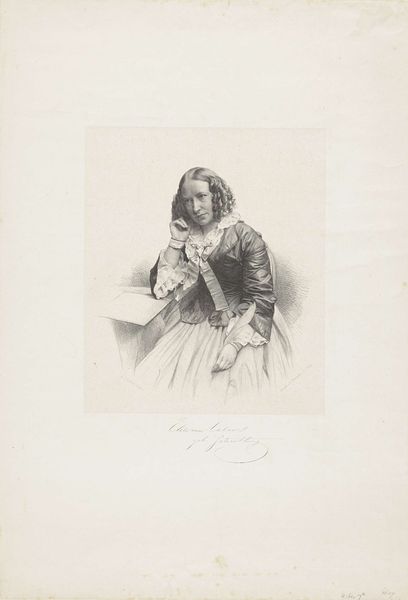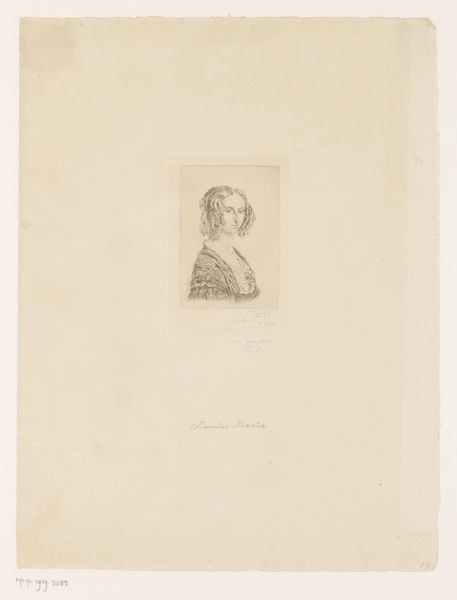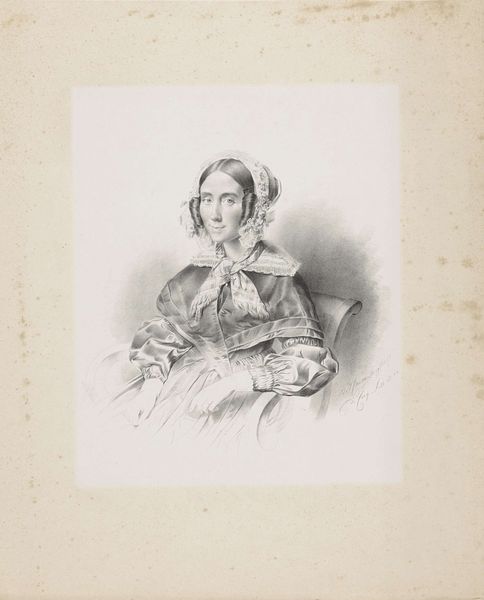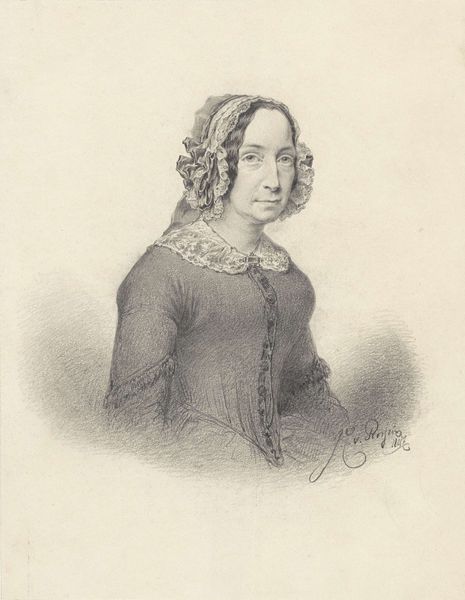
#
pencil drawn
#
light pencil work
#
wedding photograph
#
shading to add clarity
#
pencil sketch
#
old engraving style
#
personal sketchbook
#
sketchbook drawing
#
pencil work
#
watercolour illustration
Dimensions: height 190 mm, width 172 mm
Copyright: Rijks Museum: Open Domain
Editor: Here we have Lazarus Gottlieb Sichling's "Portret van Ida Frick," created sometime between 1839 and 1863. It's a delicate portrait, almost ethereal, done in pencil. The detail in the dress and hair is captivating, but it makes me wonder about the circumstances of its production. What strikes you when you look at this portrait? Curator: Immediately, I see the tension between the apparent luxury portrayed and the labor involved in its creation. Consider the sourcing of the graphite for the pencils, the skilled hand meticulously rendering each line. This wasn't a quick snapshot; it demanded considerable time and expertise. Was this portrait commissioned, perhaps signifying upward mobility or solidifying a social position? Who was Ida Frick and what can we learn about the socioeconomic conditions enabling its creation? Editor: That's fascinating. I hadn't considered the implications of the materials themselves. Do you think the artistic labor adds to or detracts from its value as a piece of art? Curator: That's precisely the point! A materialist approach reframes 'value'. We must examine the working conditions of the artist and everyone who touched the production. The economic relationships inherent in portraiture during this period are part of the portrait's significance, shifting our focus away from simply admiring 'beauty.' How did Ida Frick relate to those structures? Did she participate in the manufacturing economy? This drawing represents materialized class distinctions. Editor: So, rather than seeing it as just a pretty picture, we should be thinking about the complex web of resources and labor that made it possible. Curator: Exactly! It urges us to question the systems that gave rise to it and, implicitly, still shape art today. What do you make of the handwriting beneath the drawing? Are there any hints there about who she was? Editor: Good point. I will look at that! I guess, next time I see a portrait, I will not focus on what they are wearing, but instead I will look into how everything in it came together to make it possible to immortalize the subject in question. Curator: Precisely. Every stroke of that pencil tells a story far beyond Ida Frick’s likeness.
Comments
No comments
Be the first to comment and join the conversation on the ultimate creative platform.
